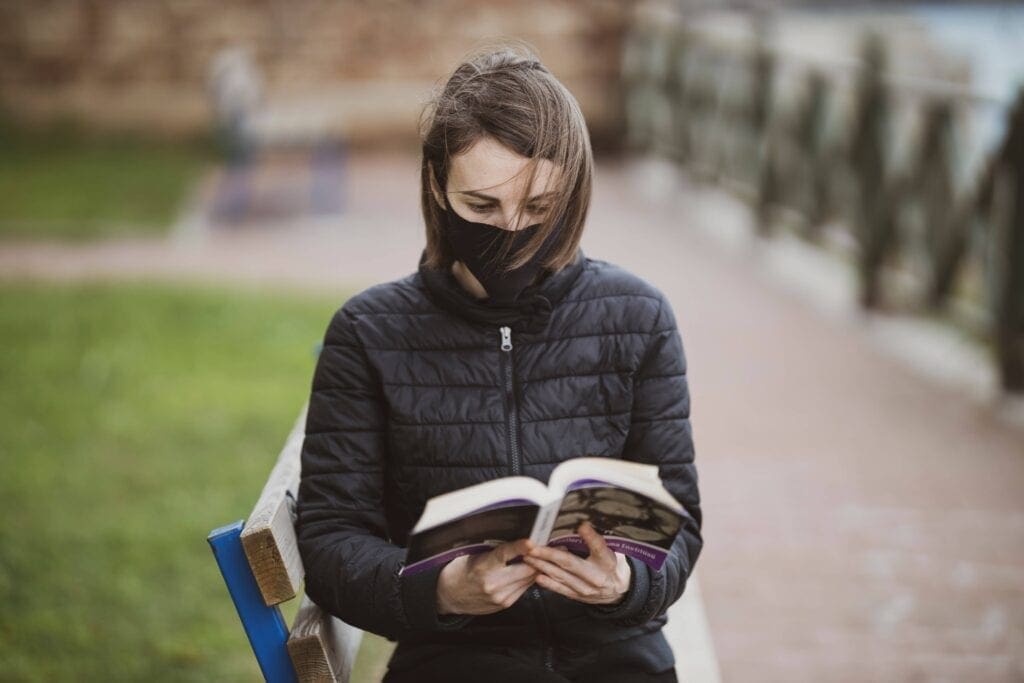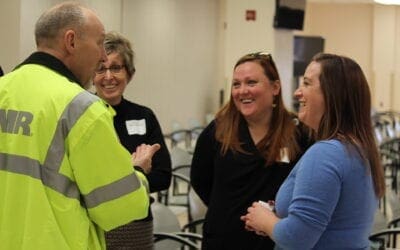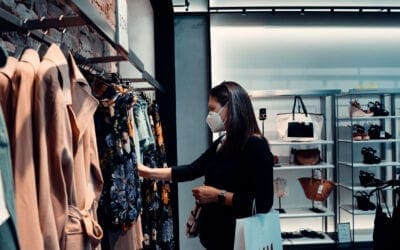How Masks Work

With the mask order in effect, many people have been wondering about the effectiveness of masking and how it works. We want to help explain this today so that you’ll feel more confident and comfortable wearing a mask, knowing that you’re protecting others and helping end the pandemic sooner. So without further ado, let’s dive in and address the science behind masking.
Do masks really work in preventing the spread of COVID-19? If so, how?

Yes, masks DO work in preventing the spread of COVID-19. Here’s how:
When people talk, cough, or sneeze, respiratory droplets are expelled into the air. Droplets then evaporate into fine particles, which can stick around longer. Masks act as a barrier to prevent these droplets from traveling into the air and onto another person.
It’s stopping the disease at the source, which is why this is known as source control. And since even people who are asymptomatic (without symptoms) can have COVID-19, it’s important for everyone who can wear a mask safely to do so.
Plus, even if you’re healthy, wearing a mask can prevent some of the larger droplets other people are spreading from getting to you. When we combine mask wearing with other virus-fighting tools such as social distancing and good hand hygiene, we can truly help stop the spread of COVID-19.
Are there any instances where masks have been shown to stop the spread of COVID-19?
Yes! For instance, there were two hair stylists in Springfield, Missouri who continued to work while symptomatic. Both later tested positive for COVID-19. Thankfully, both the stylists and the 139 clients they saw during that time wore masks. Sixty-seven clients were tested, and all came back negative. This is just one example of how powerful masks can be in stopping the spread of COVID-19, but it exemplifies how each individual’s choice to wear a mask can drastically slow the spread.
What kinds of masks/face coverings are effective?
Surgical masks and respirators (such as an N95) are effective, but should be reserved for healthcare workers due to short supply. For the general public, cloth or paper masks are recommended. For the purposes of the mask order, the following are acceptable as face coverings that block respiratory droplets when worn over the mouth and nose:
- A sewn mask secured with ties or straps around the head or behind the ears;
- Multiple layers of fabric tied around the head;
- Made from a variety of materials such as fleece, cotton, or linen; or
- Factory-made or made from household items
What about face shields? Do they work?
No, it has not been proven that face shields provide any source control protection measures, as they cannot block the respiratory particles that leave the mouth and nose. This is why a mask is more effective, and a face shield is not recommended as a substitute. In certain circumstances where masks cannot be worn, a face shield may be used for short durations of time.
Remember, wearing is caring. Your decision to wear a mask can save lives.
Sources:
Archives
- December 2025 (1)
- November 2025 (2)
- September 2025 (1)
- July 2025 (2)
- June 2025 (3)
- April 2025 (2)
- February 2025 (1)
- January 2025 (2)
- December 2024 (1)
- September 2024 (2)
- August 2024 (2)
- July 2024 (1)
- June 2024 (1)
- February 2024 (1)
- July 2023 (1)
- March 2023 (1)
- October 2022 (1)
- September 2022 (1)
- August 2022 (1)
- July 2022 (2)
- June 2022 (2)
- May 2022 (1)
- April 2022 (4)
- March 2022 (1)
- February 2022 (1)
- January 2022 (1)
- December 2021 (4)
- November 2021 (3)
- September 2021 (2)
- August 2021 (3)
- July 2021 (2)
- June 2021 (1)
- May 2021 (2)
- March 2021 (1)
- December 2020 (6)
- November 2020 (8)
- October 2020 (4)
- September 2020 (7)
- August 2020 (3)
- July 2020 (11)
- May 2020 (2)
- April 2020 (4)
- March 2020 (1)
Categories
- Communicable Disease (5)
- Clinical Services (19)
- Clinical Servcies (1)
- Health Promotions (74)
- Emergency Preparedness (8)






